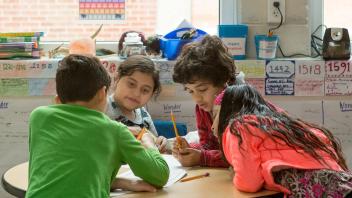What are quick writes?
Quick writes are short, informal writing tasks that can be assigned during class or as brief, out-of-class assignments. Quick writes help students remember, organize, and manage information, and they can be used at any point in a classroom lesson to help them communicate their thoughts, experiences, and reactions to what they are reading and learning. They can also be used as a formative assessment to determine how well students have learned content.
Quick writes are:
- usually completed in less than 10 minutes
- usually not revised
- informally evaluated
Quick Writes are so powerful because they do not require a significant amount of planning. For many students, writing can be very challenging and Quick Writes avoid some of the anxiety that longer, more formal writing tasks can cause.
The prolific writer Stephen King says,
If you want to be a good writer you must do two things above all others: read a lot and write a lot.”
The Common Core Writing Standards also emphasizes writing a lot, requiring students to “write routinely over extended time frames and shorter time frames for a range of tasks, purposes, and audiences.”
Examples of quick write tasks
- informal notes/scribbles
- margin notes while reading
- list of facts, steps, ideas
- set of instructions or directions
- filling in a graphic organizer or completing a set of notes
- free-writing: write on a topic for a short specified amount of time
- one-paragraph summary
- generate a few questions
- KWL chart: What I know, What I want to know, What I learned (download reflection form template)
- write a definition in your own words
- draw, label, or explain pictures/diagrams
- short answers to questions
- sentence combining
- short communication with someone else (email, tweet, note, text message)
- admit and exit tickets (download template)

Using questions for quick writes
When students respond to questions in writing, their ability to process and remember content information improves. Here are some suggestions for general questions that can be used in all content areas:
At the start of class:
- What was the most important thing you learned from your homework assignment or reading?
- What questions do you have about your homework assignment or reading?
- What are you most interested in discussing or learning in today’s class?
At the end of class:
- What was the most important thing you learned today?
- What do you want to learn more about?
- What was confusing, or is there something you would like explained better?
This content was adapted and published with permission from Keys to Literacy: The Power of Quick Writes.
